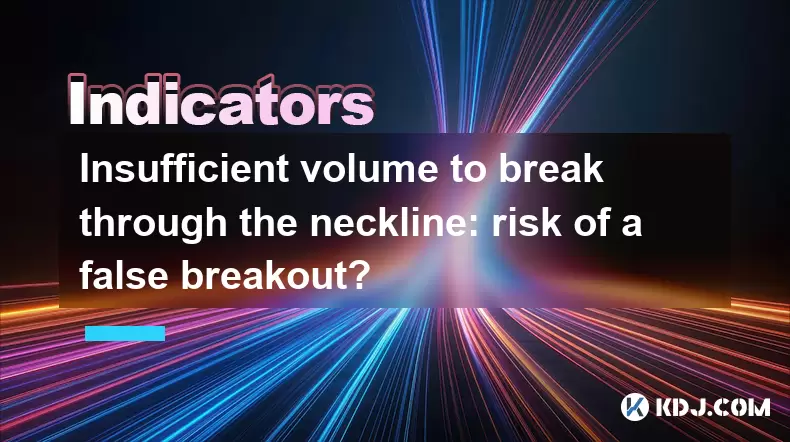-
 Bitcoin
Bitcoin $119900
0.91% -
 Ethereum
Ethereum $4576
8.55% -
 XRP
XRP $3.264
4.05% -
 Tether USDt
Tether USDt $0.9998
-0.05% -
 BNB
BNB $834.7
4.17% -
 Solana
Solana $191.8
9.96% -
 USDC
USDC $0.9998
-0.02% -
 Dogecoin
Dogecoin $0.2363
6.08% -
 TRON
TRON $0.3525
2.56% -
 Cardano
Cardano $0.8419
9.12% -
 Chainlink
Chainlink $23.19
9.97% -
 Hyperliquid
Hyperliquid $44.97
4.53% -
 Stellar
Stellar $0.4489
4.20% -
 Sui
Sui $3.876
6.19% -
 Bitcoin Cash
Bitcoin Cash $618.1
7.14% -
 Hedera
Hedera $0.2617
6.55% -
 Ethena USDe
Ethena USDe $1.000
-0.03% -
 Avalanche
Avalanche $24.61
7.96% -
 Litecoin
Litecoin $131.7
9.52% -
 Toncoin
Toncoin $3.502
3.62% -
 UNUS SED LEO
UNUS SED LEO $9.093
1.32% -
 Shiba Inu
Shiba Inu $0.00001358
5.37% -
 Uniswap
Uniswap $11.50
5.05% -
 Polkadot
Polkadot $4.150
7.77% -
 Dai
Dai $0.9997
-0.05% -
 Cronos
Cronos $0.1650
-0.75% -
 Ethena
Ethena $0.7981
2.06% -
 Pepe
Pepe $0.00001216
8.64% -
 Bitget Token
Bitget Token $4.467
1.74% -
 Aave
Aave $319.2
9.18%
Insufficient volume to break through the neckline: risk of a false breakout?
Insufficient volume increases false breakout risk in crypto trading; traders should analyze volume and wait for confirmation to mitigate losses.
Jun 09, 2025 at 04:01 am

The concept of a false breakout in the context of cryptocurrency trading is both fascinating and critical for traders to understand. A false breakout occurs when the price of a cryptocurrency breaks through a significant resistance or support level, known as the neckline, but fails to sustain the breakout and subsequently reverses direction. The phenomenon of insufficient volume to break through the neckline can significantly increase the risk of such a false breakout. This article will delve into the intricacies of volume analysis, the importance of the neckline, and how traders can identify and mitigate the risks associated with false breakouts.
Understanding Volume in Cryptocurrency Trading
Volume is a fundamental metric in trading that represents the number of shares or contracts traded in a security or market during a given period. In the context of cryptocurrencies, volume is the total number of coins traded within a specific timeframe. Volume is a crucial indicator of market strength and can provide insights into the potential sustainability of a price movement. When the volume is high, it suggests that many traders are participating in the market, which can indicate strong interest and momentum behind the price movement.
The Role of the Neckline in Technical Analysis
The neckline is a critical level in technical analysis, often used in chart patterns such as head and shoulders, double tops, and double bottoms. It represents a level of resistance or support that, once broken, can signal a significant change in market direction. A break above the neckline in an uptrend or below the neckline in a downtrend can be a strong signal for traders to enter or exit positions. However, the validity of a breakout depends heavily on the accompanying volume.
Insufficient Volume and the Risk of False Breakouts
When a cryptocurrency's price breaks through the neckline, but the volume is insufficient, it raises concerns about the sustainability of the breakout. Insufficient volume suggests that the market may not have enough momentum to maintain the new price level, increasing the risk of a false breakout. A false breakout can lead to significant losses for traders who enter positions based on the initial break, only to find the price reversing back within the previous range.
Identifying Insufficient Volume
To identify insufficient volume during a potential breakout, traders should:
- Compare the volume during the breakout to the average volume over a specified period. If the volume during the breakout is significantly lower than the average, it may indicate a lack of market interest.
- Monitor the volume in the periods leading up to the breakout. A gradual increase in volume can signal growing interest and support for the breakout, while a sudden spike in volume without prior buildup may suggest a false signal.
- Use volume indicators such as the Volume Weighted Average Price (VWAP) or the On-Balance Volume (OBV) to assess the strength of the breakout. These indicators can help traders determine whether the volume is sufficient to support the price movement.
Mitigating the Risk of False Breakouts
Traders can take several steps to mitigate the risk of false breakouts caused by insufficient volume:
- Wait for confirmation. Instead of entering a position immediately after a breakout, traders should wait for additional confirmation, such as a retest of the neckline with higher volume or a continuation of the price movement.
- Use stop-loss orders. Placing stop-loss orders just below the neckline in an uptrend or above the neckline in a downtrend can help limit potential losses if the breakout turns out to be false.
- Diversify trading strategies. Relying on multiple indicators and strategies can help traders avoid the pitfalls of false breakouts. For example, combining volume analysis with other technical indicators such as moving averages or the Relative Strength Index (RSI) can provide a more comprehensive view of market conditions.
Case Studies of False Breakouts in Cryptocurrency Markets
Examining real-world examples of false breakouts in cryptocurrency markets can provide valuable insights into the importance of volume analysis. For instance, Bitcoin experienced a false breakout in early 2021 when it briefly surpassed the $60,000 mark but failed to sustain the breakout due to insufficient volume. The price quickly reversed, leading to significant losses for traders who entered positions based on the initial break. Similarly, Ethereum faced a false breakout in mid-2021 when it broke above $4,000 but lacked the volume to maintain the new price level, resulting in a sharp decline.
The Psychological Impact of False Breakouts
False breakouts can have a significant psychological impact on traders. The emotional toll of entering a position based on a breakout, only to see the price reverse, can lead to doubt and hesitation in future trading decisions. This psychological impact underscores the importance of understanding and managing the risks associated with false breakouts. Traders should develop a disciplined approach to trading, focusing on risk management and maintaining a long-term perspective.
Conclusion
Understanding the relationship between volume and breakouts is essential for any cryptocurrency trader. Insufficient volume to break through the neckline can significantly increase the risk of a false breakout, leading to potential losses. By carefully analyzing volume, waiting for confirmation, and using appropriate risk management strategies, traders can better navigate the challenges posed by false breakouts and improve their overall trading performance.
Frequently Asked Questions
Q: How can traders differentiate between a genuine breakout and a false breakout?
A: Traders can differentiate between a genuine and a false breakout by closely monitoring the volume during the breakout. A genuine breakout is typically accompanied by high volume, indicating strong market participation and momentum. In contrast, a false breakout often occurs with insufficient volume, suggesting a lack of market interest. Additionally, waiting for confirmation, such as a retest of the neckline with higher volume or a continuation of the price movement, can help traders distinguish between the two.
Q: What are some common indicators used to assess the strength of a breakout?
A: Several indicators can help traders assess the strength of a breakout. The Volume Weighted Average Price (VWAP) and the On-Balance Volume (OBV) are two volume-based indicators that provide insights into the market's strength. Additionally, technical indicators such as moving averages and the Relative Strength Index (RSI) can be used to confirm the breakout's validity by analyzing price trends and momentum.
Q: How can traders manage the emotional impact of false breakouts?
A: Managing the emotional impact of false breakouts involves developing a disciplined trading approach. Traders should focus on risk management, such as setting stop-loss orders and diversifying their trading strategies. Maintaining a long-term perspective and avoiding emotional decision-making can also help mitigate the psychological toll of false breakouts. Regularly reviewing and learning from past trades can further enhance emotional resilience.
Q: Are there specific timeframes that are more prone to false breakouts?
A: False breakouts can occur across various timeframes, but they are often more prevalent in shorter timeframes such as intraday charts. This is because shorter timeframes are more susceptible to market noise and sudden price movements, which can lead to false signals. Traders should be particularly cautious when trading on shorter timeframes and use volume analysis and confirmation strategies to validate breakouts.
Disclaimer:info@kdj.com
The information provided is not trading advice. kdj.com does not assume any responsibility for any investments made based on the information provided in this article. Cryptocurrencies are highly volatile and it is highly recommended that you invest with caution after thorough research!
If you believe that the content used on this website infringes your copyright, please contact us immediately (info@kdj.com) and we will delete it promptly.
- Unich's OTC Exchange: Surging with $1.2B Volume – What's the Hype?
- 2025-08-13 02:50:11
- MoonBull's Explosive Moves: Your Crypto Whitelist Ticket to Ride!
- 2025-08-13 02:30:11
- MAGACOIN Finance: Don't Miss the Presale Bonus!
- 2025-08-13 02:30:11
- Trump's Crypto Kingdom: $2.4 Billion and Counting
- 2025-08-13 02:50:11
- Solana, LSTs, and SEC Approval: A New Dawn for Crypto?
- 2025-08-13 02:55:12
- Bitcoin's Profit Surge: Unpacking the BTC Value Boom
- 2025-08-13 02:55:12
Related knowledge

What does it mean when the +DI and -DI cross frequently in the DMI indicator but the ADX is flattening?
Aug 11,2025 at 03:15am
Understanding the DMI Indicator ComponentsThe Directional Movement Index (DMI) is a technical analysis tool composed of three lines: the +DI (Positive...

What does it mean when the moving average, MACD, and RSI all send buy signals simultaneously?
Aug 11,2025 at 01:42pm
Understanding the Convergence of Technical IndicatorsWhen the moving average, MACD, and RSI all generate buy signals at the same time, traders interpr...

What does it mean when the price is trading above the SAR indicator but the red dots are densely packed?
Aug 09,2025 at 11:49pm
Understanding the SAR Indicator and Its Visual SignalsThe SAR (Parabolic Stop and Reverse) indicator is a technical analysis tool used primarily to de...

What does it mean when the candlestick chart forms a "Morning Star" but trading volume is sluggish?
Aug 12,2025 at 06:28pm
Understanding the Morning Star Candlestick PatternThe Morning Star is a three-candle bullish reversal pattern commonly observed in cryptocurrency pric...

What does it mean when the RSI indicator moves sideways for an extended period between 40 and 60?
Aug 10,2025 at 08:08am
Understanding the RSI Indicator in Cryptocurrency TradingThe Relative Strength Index (RSI) is a momentum oscillator widely used in cryptocurrency trad...

What does it mean when the MACD histogram continues to shorten but the price reaches a new high?
Aug 09,2025 at 09:29pm
Understanding the MACD Histogram and Its ComponentsThe MACD (Moving Average Convergence Divergence) indicator is a widely used technical analysis tool...

What does it mean when the +DI and -DI cross frequently in the DMI indicator but the ADX is flattening?
Aug 11,2025 at 03:15am
Understanding the DMI Indicator ComponentsThe Directional Movement Index (DMI) is a technical analysis tool composed of three lines: the +DI (Positive...

What does it mean when the moving average, MACD, and RSI all send buy signals simultaneously?
Aug 11,2025 at 01:42pm
Understanding the Convergence of Technical IndicatorsWhen the moving average, MACD, and RSI all generate buy signals at the same time, traders interpr...

What does it mean when the price is trading above the SAR indicator but the red dots are densely packed?
Aug 09,2025 at 11:49pm
Understanding the SAR Indicator and Its Visual SignalsThe SAR (Parabolic Stop and Reverse) indicator is a technical analysis tool used primarily to de...

What does it mean when the candlestick chart forms a "Morning Star" but trading volume is sluggish?
Aug 12,2025 at 06:28pm
Understanding the Morning Star Candlestick PatternThe Morning Star is a three-candle bullish reversal pattern commonly observed in cryptocurrency pric...

What does it mean when the RSI indicator moves sideways for an extended period between 40 and 60?
Aug 10,2025 at 08:08am
Understanding the RSI Indicator in Cryptocurrency TradingThe Relative Strength Index (RSI) is a momentum oscillator widely used in cryptocurrency trad...

What does it mean when the MACD histogram continues to shorten but the price reaches a new high?
Aug 09,2025 at 09:29pm
Understanding the MACD Histogram and Its ComponentsThe MACD (Moving Average Convergence Divergence) indicator is a widely used technical analysis tool...
See all articles

























































































